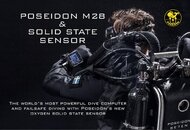The "problem" is that it's not really backwards compatible unless they start putting a DAC in the cell itself. In which case it will then need to be powered, which means that unless a rebreather is using a DiveCAN type of system, you're going to need to modify it beyond a simple firmware flash (think Shearwater, Meg15, etc.), so every manual CCR is going to need some sort of actual electronics, and every eCCR is going to have to have the electronics swapped to either digital, or whatever electronics will power a DAC'd solid state cell. I doubt ISC is going to retroactively start re-manufacturing Meg head electronics for compatibility.
Of course this is all assuming they're reliable and functional in the first place, which is really only going to become apparent once they've been out for a while. If not the first generation of cells, I'm sure eventually it will be reliable enough.
Would I love to put these in my Meg or Pelagian? Absolutely. However, at this relatively "untested" stage, I'm not going to jump on the bandwagon and start plugging electronics into my Pelagian, or getting non-standard electronics mods done to my Meg.
I think these are definitely a potential game changer, but at this point, accurate cell checking and a solid rotation schedule is a good way to virtually eliminate sensor issues. I'm a firm believer in the 6-month weakest swap method. Statistically it's about as safe as you're gonna get. I also dislike voting logic, but that's another story.




